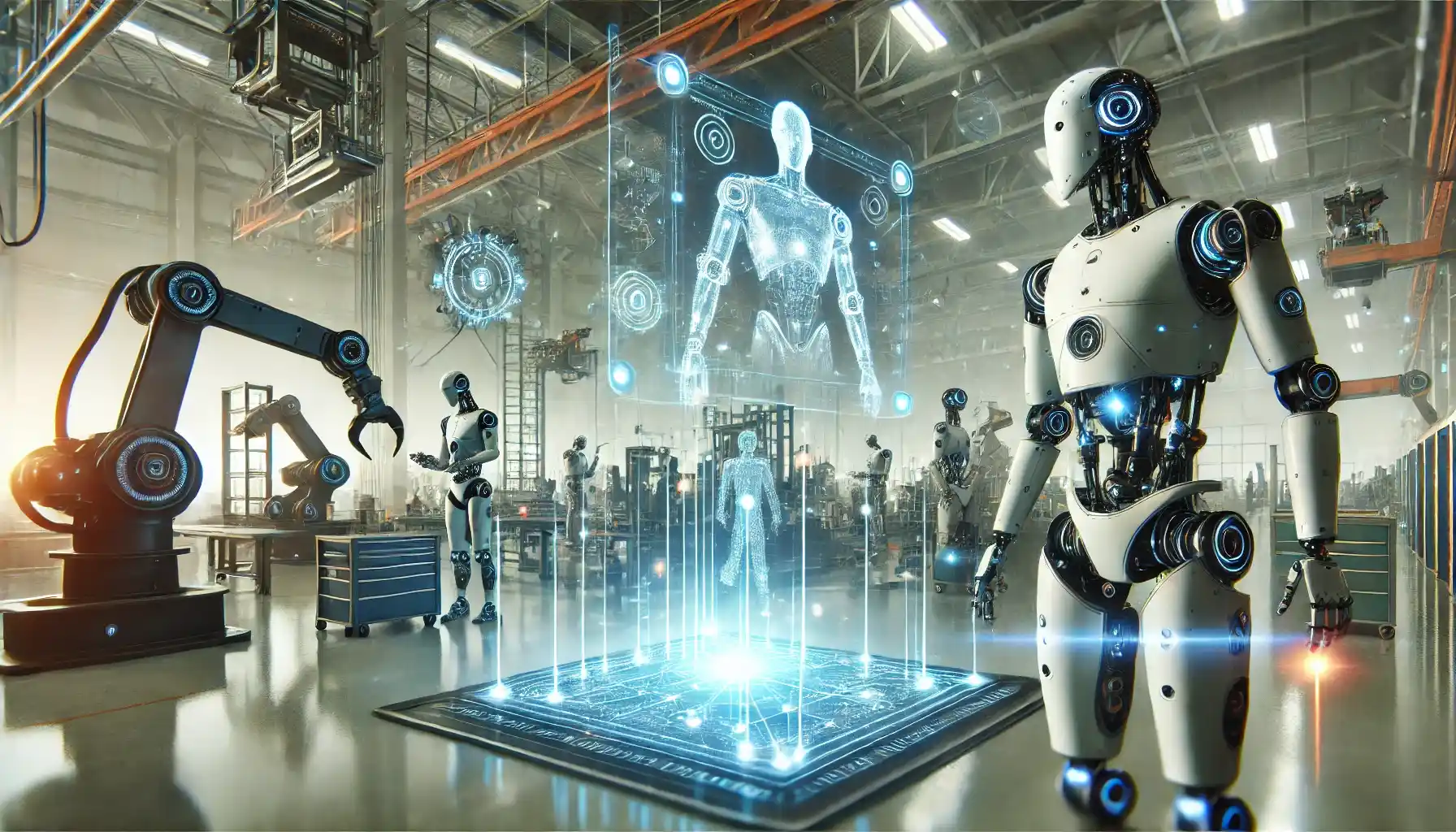In an increasingly automated world, robot protocol has emerged as a critical component for ensuring efficient communication and collaboration between robots, machines, and software systems. From industrial manufacturing to healthcare and even home automation, robots are transforming every facet of modern life. Yet, managing the complex interactions between different robots, controllers, and sensors requires a well-structured set of rules—this is where robot protocols come into play.
Table of Contents
This article delves into the fundamentals of robot protocol, exploring its definitions, core components, benefits, challenges, and future trends. By understanding this essential foundation, businesses and technology enthusiasts can unlock the true potential of robotics systems, paving the way for smoother, safer, and more efficient operations in today’s fast-evolving landscape.
What Is Robot Protocol?
In simple terms, a robot protocol is a standardized method or set of rules that governs how robots communicate and interact with each other or with external systems such as controllers, sensors, and software. Much like human languages, robot protocols ensure that machines “speak” the same technical language, thereby eliminating misunderstandings that can lead to errors or inefficiencies. These protocols define data formats, transmission rates, error-checking methods, and various handshake mechanisms.
The Importance of Standardization
When multiple robots and devices share the same environment, seamless integration is paramount. Standardizing communication is vital in:
- Reducing Complexity: A consistent protocol means fewer custom integrations and easier maintenance.
- Improving Reliability: Standard messages and clear instructions help prevent miscommunications that could derail tasks.
- Scaling Operations: As automation expands, standardized protocols make it simpler to add new robots or machines without overhauling the entire system.
By adhering to a robot protocol, manufacturers can rapidly deploy new solutions, and researchers can develop novel robotic applications without reinventing communication mechanisms for every device.
Key Components of Robot Protocol
A typical robot protocol consists of several components that work together to define the communication process. While the specifics vary across different industries and applications, the following elements are common to most protocols.
1. Data Structure
The data structure outlines how messages are formatted and parsed. It typically specifies:
- Message Headers: Containing details like message length, type, and source/destination identifiers.
- Payload: The actual content (e.g., sensor readings, command instructions, status updates).
- Checksum or CRC (Cyclic Redundancy Check): Used to detect errors during transmission.
A well-defined data structure helps ensure that all parties understand the content of a message, reducing errors caused by misinterpretation.
2. Transport and Network Layer
The transport layer governs how data travels across physical or virtual networks. This may involve:
- Wired Connections (Ethernet, Serial): Often used in industrial settings where reliability is key.
- Wireless Protocols (Wi-Fi, Bluetooth, Zigbee): Common in collaborative robotics or mobile robots that need flexibility and mobility.
- Application-Level Interface: Defining how data requests, confirmations, and acknowledgments are exchanged between different software modules.
Choosing the correct transport method ensures the system can handle data rates and reliability requirements specific to the application at hand.
Popular Robot Protocol Standards
While there are numerous custom solutions, a few widely adopted protocol standards have significantly shaped robotics development and deployment. Below are two notable examples that showcase how standardized frameworks can streamline robot communication.
1. ROS (Robot Operating System)
Despite its name, ROS is not a traditional operating system but rather a flexible framework providing tools, libraries, and conventions for building robot applications. ROS offers:
- Standardized Message Types: Ensuring that different nodes (processes) can exchange information about sensors, movements, or navigation consistently.
- Publish-Subscribe Model: Nodes can broadcast messages to topics and subscribe to relevant streams without direct point-to-point connections.
- Rich Ecosystem: A massive collection of open-source packages and tools that simplify robotics development.
By unifying various hardware and software components under a single protocol, ROS accelerates research, prototyping, and commercial deployments in robotics.
2. OPC UA (OPC Unified Architecture)
Originally designed for industrial automation, OPC UA has become a go-to standard in smart factories and collaborative robot (cobot) environments. Some key features include:
- Platform Independence: Works seamlessly with different operating systems and hardware architectures.
- Robust Security Measures: Encryption and authentication support for secure data exchange.
- Scalability: Adapts from small-scale sensor data collection to large distributed control systems in factories.
OPC UA’s focus on interoperability has led to widespread adoption in settings where reliable machine-to-machine (M2M) communication is crucial, such as manufacturing assembly lines and process control applications.
Benefits of Implementing Robot Protocol
1. Enhanced Interoperability
Using a standardized robot protocol ensures that diverse robots, sensors, and controllers can easily share information. This level of interoperability is crucial in multi-vendor environments, where a single factory floor or research lab might utilize robots from several manufacturers.
2. Streamlined Development and Maintenance
When developers rely on a predefined set of communication rules, they can focus on core functionalities rather than low-level integration tasks. In turn, maintenance becomes more straightforward as troubleshooting is guided by standardized messages and error codes.
3. Increased Reliability and Safety
Robotics systems often operate around people or handle critical tasks. Clear and consistent communication protocols help avoid misinterpretations that could result in accidents or inefficiencies. Robust error handling ensures that any fault is quickly detected, reported, and managed.
4. Future-Proofing and Scalability
Standard protocols are regularly updated with new features and security enhancements, protecting investments over time. When scaling operations—be it adding more robots or connecting to cloud-based analytics—an established communication standard makes expansion more seamless.
Challenges and Considerations
Despite the numerous advantages, implementing and maintaining a robot protocol can introduce certain complexities. Being aware of these challenges from the outset can help organizations plan better for a successful deployment.
1. Integration Complexity
Even with standardized protocols, each robot or peripheral might have unique requirements. Configuration mismatches, timing constraints, or partial protocol support can lead to integration hurdles. Thorough testing and vendor collaboration are essential to overcome these issues.
2. Performance Trade-Offs
Protocol overhead, encryption, and error-checking mechanisms can introduce latency or reduce throughput. In real-time or safety-critical applications (e.g., surgical robotics, autonomous drones), every millisecond counts. Engineers must balance robust communication with performance requirements, possibly opting for specialized or lightweight protocols where necessary.
3. Cybersecurity Concerns
As robots become increasingly connected to networks, cybersecurity must be a priority. Attackers targeting industrial setups or service robots could cause operational havoc or compromise sensitive data. Protocols like OPC UA and modern versions of ROS address many security concerns, but organizations need to implement best practices—regular updates, access control, and continuous monitoring—to minimize vulnerabilities.
4. Cost of Implementation
Deploying or migrating to a new protocol may involve hardware upgrades, software licensing fees, and training costs. Smaller enterprises, in particular, may find the price tag prohibitive if they lack the necessary infrastructure. Careful cost-benefit analysis is crucial before committing to any large-scale adoption.
Future Trends in Robot Protocol
With technological advances accelerating, robot protocol standards are also evolving to meet the demands of more capable, connected, and collaborative robotic systems.
1. Edge Computing and 5G Integration
Real-time data processing at the edge (near the robot itself) combined with ultrafast, low-latency 5G networks could revolutionize how robots communicate. Protocols are being developed to support edge intelligence and rapid data exchange, enabling robots to make decisions faster and operate more autonomously.
2. AI-Driven Adaptability
Protocols might soon incorporate AI or machine learning (ML) layers to dynamically adjust communication parameters based on environmental conditions. For example, a robot might detect network congestion and automatically switch to a more efficient data compression method or offline decision-making until bandwidth improves.
3. Standardized Safety Protocols for Cobots
As collaborative robots (cobots) become more common, protocols that emphasize safety—like real-time obstacle detection and secure shutdown sequences—will be increasingly important. We can expect more specialized frameworks that define how cobots communicate their status and sense environmental changes to prevent accidents.
4. Blockchain and Decentralized Networks
In some scenarios, especially large-scale industrial IoT or multi-robot ecosystems, blockchain could ensure secure, tamper-proof transaction logs. Robot protocols may leverage decentralized architectures to manage identity, permissions, and operational data, further enhancing trust in highly distributed environments.
Conclusion
Robot protocol stands at the heart of modern automation, enabling safe, reliable, and efficient communication among an ever-growing array of machines and software systems. As industrial and service robots evolve, so too will the protocols that guide their interactions, shaping new possibilities in manufacturing, healthcare, logistics, and beyond. By understanding the fundamentals—and carefully selecting or designing the right protocol—organizations can thrive in a rapidly transforming marketplace that demands cohesive, intelligent robotic systems.
Whether you’re a manufacturer looking to streamline your operations, a researcher aiming to push the boundaries of robotic capabilities, or a hobbyist eager to experiment with home automation, a solid grasp of robot protocol will be essential. Embracing standardization, prioritizing security, and remaining aware of emerging trends can help you maximize the benefits while mitigating the challenges that come with advanced robotic ecosystems.
For more information and additional resources on robotics and automation standards, visit the Open Robotics official website.

